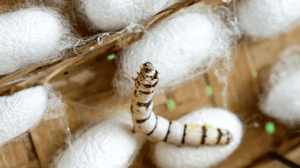A new technique has been developed by bioengineers at the Universities of Vienna and Oxford, who have succeeded in creating mini tubules where nerves can regrow. Initial tests on animals are positive. Human testing is now also being considered.
In some cases, when a peripheral nerve is severed, it can be repaired (or attempts can be made to regenerate it) by encouraging the severed ends to grow along appropriate guides. So far these have been made from materials like crustacean chitosan or collagen. However, results are still not perfect because, in some situations, the autotransplantation of nerve fibres does not take root, and the nerves do not regrow in a functionally useful way.
Now, however, bioengineers from the Universities of Vienna, Austria, and Oxford, UK, have developed a technique that seems more effective than those used so far, starting with two naturally occurring materials: silk from silkworms and from spiders.
As reported in the scientific journal Advanced Health Materials, silk from silkworms (or to be more precise, its main protein, called fibroin) makes it possible to create efficient mini-tubules that can be used as guides for nerves to regrow (in this case, the sciatic nerve). Meanwhile, spider silk was used to fill the tubules so that they had the right elasticity and robustness and could direct the growth of Schwann cells (cells that line the axons - the elongated parts of neurons which have protective and insulating functions). These are then placed inside the tubules.
Once the guides were filled with nerve cells, the researchers 'attached' them to the ends of severed nerves in animals, then treated other animals with classic autotransplantation or empty tubules for comparison. These different types of 'treatment' were left in place for 14 weeks.
Afterwards, researchers assessed functional recovery, the integrity of the new nerve fibres (including the formation of the protective myelin sheath, a substance essential for insulation) and the growth of axons, the most important parts of nerve cells that transmit impulses.
Better recovery
Researchers thus demonstrated that Schwann cells grow well in the silk tubules and are able to form a sort of bridge for the nerve endings, which begin working again. Recovery was much better than with previous techniques.
The new axons produced are also better quality and there are no reactions associated with rejection (silk is already used in surgery for this reason).
Tests are continuing
In addition, the study was also an opportunity to investigate the structure of the tubules, which turned out to be porous and therefore capable of letting fluids and nutrients pass through (with cellular waste flowing in the opposite direction). This is essential for Schwann cells to survive, and these features explain the success of the guide that incorporates both kinds of silk.
Everything now appears ready for initial testing on humans.




